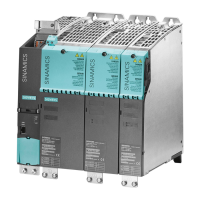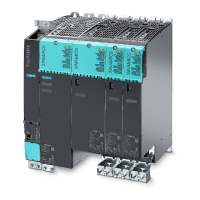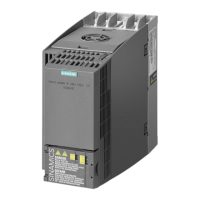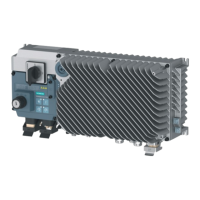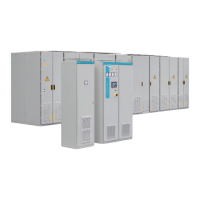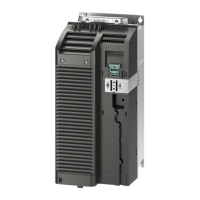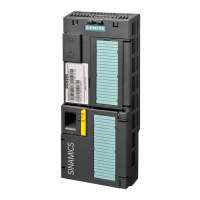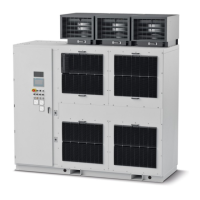Acceptance test and acceptance report
10.5 Acceptance tests
Safety Integrated
Function Manual, 05/2010, A5E03264275A
289
Example trace SLS with STOP C
6723&DFWLYH
6HOHFW6/6ELW
6HOHFW6/6ELW
'HVHOHFW6/6
%LWWUDFNV
'ULYHBU>@6,0RWLRQGLDJQRVWLFVVSHHGDFWXDOORDGVLGHVSHHGYDOXHRQ&RQWURO8QLW
'ULYHBU>@6,0RWLRQGLDJQRVWLFVVSHHGFXUUHQW6%5VSHHGOLPLWRQ&RQWURO8QLW
,QWHUQDOHYHQW
6/6DFWLYH
66DFWLYH
$FWLYH6/6OHYHOELW
$FWLYH6/6OHYHOELW
626DFWLYH
Figure 10-6 Example trace: SLS with STOP C
Trace evaluation:
● SLS function with SLS level 1 is active (see bits "deselection SLS", "selection SLS bit 0",
"selection SLS bit 1" and "SLS active", "active SLS level bit 0" and "active SLS level
bit 1")
● Drive is accelerated beyond the SLS limit (time axis from approx. -400 ms)
● Exceeding of the limit is recognized (time axis 0 ms)
● Safety fault is initiated (time axis 0 ms; bit "internal event" is set to 0)
● Fault response STOP C is initiated (see bit "STOP C active" and "SS2 active")
● Drive is decelerated to a standstill (see orange curve of r9714[0])
● After the SS2 timer has expired the follow-up function SOS is activated (time axis 500
ms)
● The "SOS active" bit is set and "SLS active" is reset
Note
Minor time differences (of the order of 2 to 3 Safety clock cycles (here up to 36 ms)) are
caused by internal calculations and do not present a problem.
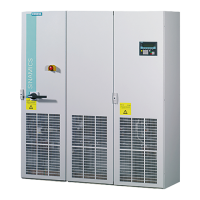
